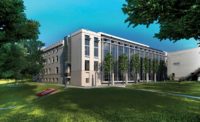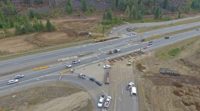Intermountain Owner of the Year: Boise Plots a Vibrant Course for Its Future

The 26-story Arthur tower with 298 apartments and retail space is one of several projects providing more housing in Boise’s urban center and aiming to prevent urban sprawl.
Photo courtesy McAlvain Construction
Boise, Idaho’s capital and largest city, has embarked on an ambitious plan to manage recent historic growth and steer its future development. The population of the Gem State metropolis swelled to 236,634 in 2023 from 205,671 in 2010, according to U.S. Census data, and the city and surrounding area has routinely been at or near the top of fastest growing lists in the U.S.
In 2019, amid concerns about losing the quality of life that residents enjoy and that draws transplants, Boise began rewriting its planning and zoning codes, which took effect on Jan. 1. Currently about $340 million in new projects are underway, mostly in Boise’s historic downtown.
Micron, the home-grown microchip manufacturer with its headquarters at the edge of the city, is just beginning work on a $7-billion fabrication plant, fueled by federal funding under the 2022 Chips and Science Act.
In 2021, the city council and Mayor Lauren McLean announced plans for city operations to be carbon neutral by 2035 and for all of Boise to be carbon neutral by 2050; the city is in the process of converting all its facilities to electric power. In 2023, Boise negotiated a first-of-its-kind agreement with Idaho Power to purchase power from renewable sources to operate a new water treatment plant and addition to the Boise airport. Boise plans to expand the program in years to come and recently received a $3.8-million federal grant to install EV charging stations around the city.
To ensure its future water supply, Boise launched its Water Renewal Utility Plan in 2020. The goal is to reuse treated waste water for industrial use and then reinject it into the aquifer. A pilot program testing various treatment systems is currently underway near the Micron headquarters, and land for a future processing plant was purchased earlier this year.
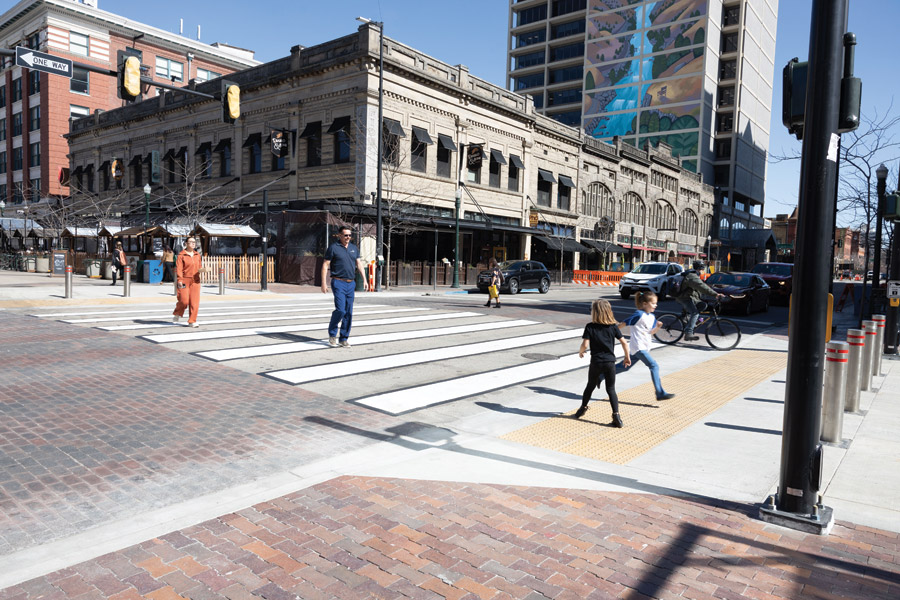
Two blocks of 8th Street in the heart of the city are being permanently closed to traffic. Outdoor dining spaces that appeared during the COVID-19 pandemic will be made permanent, and pavement and curbs are being modified to accommodate pedestrians. The new car-free street is set to officially open this spring.
Photo courtesy the City of Boise
Managing Surge, Avoiding Sprawl
Jessica Szelag, city deputy planning director, says in the years leading to the code rewrite, her agency was reviewing nearly 100 projects per month, but special requests were slowing the process down.
“We had an assessment done of how many requests for rezones and variances and conditional uses we were getting, and it was overwhelming. That’s a sign the code isn’t working anymore,” she says. “There had not been a major update since the 1960s, and we needed it to address these high-level goals we set.”
The effort to rewrite the code was joined in 2022 by Tim Keane, who was hired as Boise director of planning and zoning, having led similar efforts in Charlotte, N.C., and Atlanta.
“Relative to other places in the West, Boise has the chance to do what others have not and that is to grow within itself.”
—Tim Keane, Director of Planning and Zoning, City of Boise
“Relative to other places in the West, Boise has the chance to do what others have not and that is to grow within itself,” he says. “Places like Salt Lake City and others have kind of exploded across the valleys, and you get all the problems associated with that. We had hours and hours of public hearings, and the public said, ‘We don’t want to be the next city in America or the West to sprawl.’”
The resulting code categorizes land use into residential, mixed use, open land and industrial groups. Multiple overlay zones for each type of land use aim to preserve unique characteristics of neighborhoods or restrict building near things like natural hazards, community open space and recreational areas. The code increases density in many areas, particularly in the downtown along city bus routes. In other areas, parking requirements and height restrictions were removed, and several downtown parking lots have been or are being converted to community gathering spaces.
Keane says the hope is that removing restrictions and adding incentives will free designers and encourage developers to create more living and mixed-use spaces downtown.
“We didn’t want just one solution for each area. We want multiple options in all the zones,” he says. “As for downtown, there has been a trend of more residential, and that is continuing. The more people we can have living in the city and downtown, the better.”
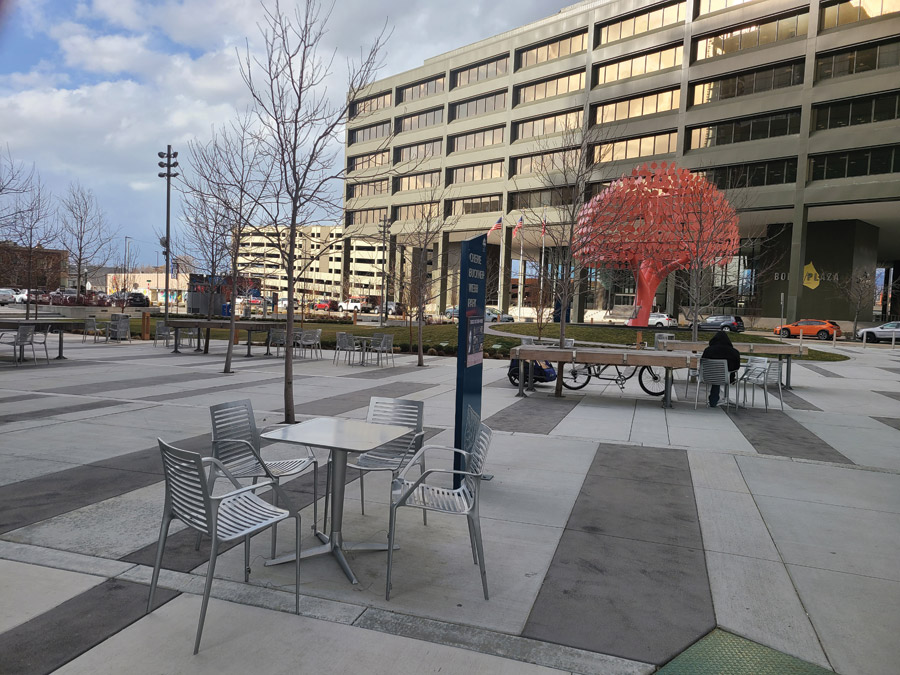
An underused parking lot was transformed into the Cheri Buckner-Webb Park. It is one of the public spaces helping to activate the downtown and attract residents to the area.
Image by Brian Fryer
Downtown Activity
Boise planning and zoning building official Jason Blais notes “a record number of multifamily units and record levels of valuation permitted in 2021 and 2022. The number of permits dropped off in 2023, but the value remained at a record high. Some of those projects have been delayed, but most are still going.”
Szelag says residents on neighborhood lots where permitted density was increased have been quick to act. “In the year before the new code went into effect, we had 45 applications for accessory dwelling units,” she notes. “The new code has been in place for just nine weeks now, and we’ve already had 60 ADU applications.”
Keithly, the city’s economic development director, says many current projects and city infrastructure improvements have been enabled through tax increment financing by the city’s redevelopment arm, the Capital City Development Corp.
“You really don't know what big changes to a code will actually mean for a few years.”
—David Wali, Managing Partner, Gardner Group
Kyle Hemly is a landscape architect for Boise-based design firm CSHQA, which has been involved in many of the recent changes to the city’s streetscape. The firm recently led redesign of several downtown streets to include separated bike lanes and curb extensions, called bulb-outs, to improve pedestrian safety and calm traffic. The firm has also been at work on changes to two blocks of the wide, tree-lined 8th Street that are being converted to pedestrian only spaces. “During COVID, [city officials] let the restaurants open outside space, and it was really popular,” Hemly says, and “our design almost doubles the outdoor space for restaurants.”
New residential, mixed-use and hospitality projects make up the bulk of current activity downtown. At the intersection of 12th and Idaho streets, the Arthur tower, a 26-story mixed-use project with retail space and 298 residences, is rising on what was once the site of a surface parking lot. The $140-million project was a public-private partnership between the city and 12th and Idaho LLC, a joint venture of several developers. Designed by Chicago-based Soloman Cordwell Buenz and Associates and being built by Power Construction Company LLC and Boise-based McAlvain Construction, the Arthur will feature two levels of rooftop amenities, including a pool behind a jagged roofline that references the nearby Sawtooth Mountains.
Construction of the $100-million Broadstone Saratoga mixed-use building with 334 apartments, the Idaho Central Credit Union offices and 100-apartment residential towers are moving forward as are plans to demolish the city’s YMCA and rebuild it to include expanded facilities and low- and moderate-income housing.
Salt Lake City-based Okland Construction is nearing completion of the eight-story, $68-million Renegade—a 122-room boutique hotel designed by CSHQA and meant to reflect historic Boise architecture.
11th Street, a former motel is being renovated and expanded into The Sparrow, a 68-room boutique hotel featuring a coffee shop and food truck on a shared plaza. The developments, which share frontage with 11th Street, have enabled improvements like bike lanes and bulb-outs.
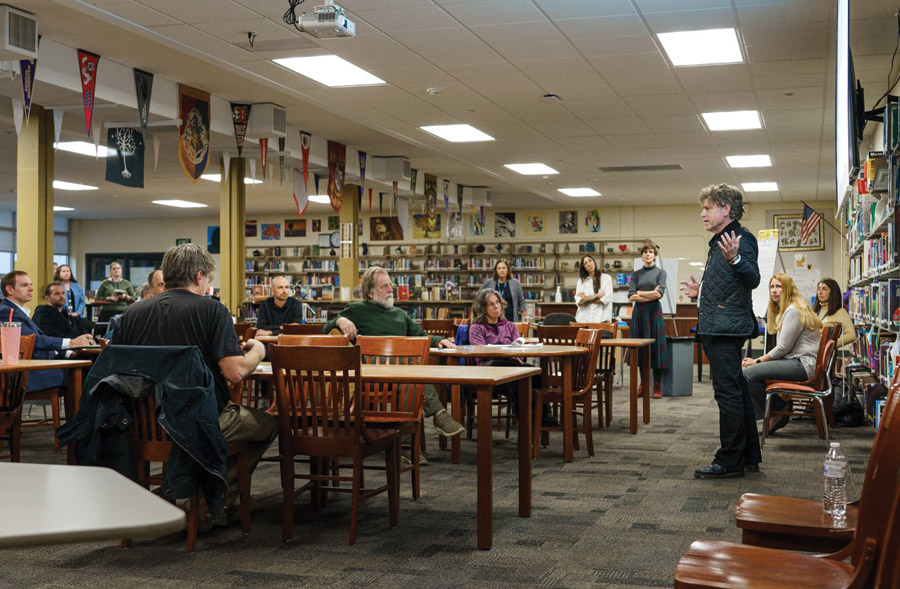
Tim Keane, Boise planning and zoning director, speaks at one of many public meetings held as the new planning goals and code changes were developed and presented.
Image courtesy the City of Boise
Szelag says the largest projects designed under the new code are a satellite campus for the College of Western Idaho that will include instruction space; mixed-use buildings; a hotel fronting the Boise River; and construction of the Capitol Campus, a large development project near Boise State University carried out in partnership with the City of Boise that will include office buildings, parking, retail space and 400 units of housing—half of which are designated “affordable.”
Salt Lake City-based real estate developer Gardner Group has developed the 8th and Main, or Zion’s Bank tower, the tallest building in the state at 18 stories, as well as the City Center Plaza, a pedestrian-oriented plaza and commercial space built on top of Boise’s below-grade transit hub, among other recent projects.
David Wali, Gardner managing partner of Idaho projects, says he and, he assumes, other developers as well are still sorting out what the new codes will mean for projects going forward.
“You really don’t know what big changes to a code will actually mean for a few years. We’ll have to see the economics behind a project, and how banks are going to finance them. I suspect there will be some positive and some negative things to come out of it,” he says. Wali notes the firm “can decide what we want,” such as more residents in the downtown, “but the market is going to tell us what we have to provide.”

